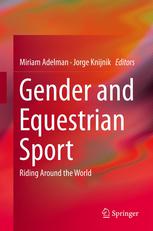

Most ebook files are in PDF format, so you can easily read them using various software such as Foxit Reader or directly on the Google Chrome browser.
Some ebook files are released by publishers in other formats such as .awz, .mobi, .epub, .fb2, etc. You may need to install specific software to read these formats on mobile/PC, such as Calibre.
Please read the tutorial at this link: https://ebookbell.com/faq
We offer FREE conversion to the popular formats you request; however, this may take some time. Therefore, right after payment, please email us, and we will try to provide the service as quickly as possible.
For some exceptional file formats or broken links (if any), please refrain from opening any disputes. Instead, email us first, and we will try to assist within a maximum of 6 hours.
EbookBell Team

4.3
78 reviewsThis volume brings together studies from various disciplines of the social sciences and humanities ( anthropology, sociology, cultural studies, history and literary theory) that shed light on the equestrian world as a historically gendered and highly dynamic field of contemporary sport and culture. From high level international dressage and jumping, polo and the turf, to the rodeo world of the Americas and popular forms of equestrian sport and culture, we are introduced to a range of issues that are played out at local and global, national and international levels. Students and scholars of gender, culture and sport will find much of interest in this original look at contemporary issues such as “engendered” (women’s and men’s) identities/subjectivities as equestrians, representations of girls, horses and the world of adventure in juvenile fiction; the current “feminization” of particular equestrian activities (and where boys and men stand in relation to this); how broad forms of social inequality and stratification play themselves out within gendered equestrian contexts; men and women and their relation to horses within the framework of current discussions on the relation of animals to humans (which may include not only love and care, but also exploitation and violence), among others. Singular contributions show how equestrian activities contribute to historical and current constructions of embodied “femininities” and “masculinities”, reflecting a world that has been moving “beyond the binaries” while continuing to be enmeshed in their persistent and contradictory legacy.